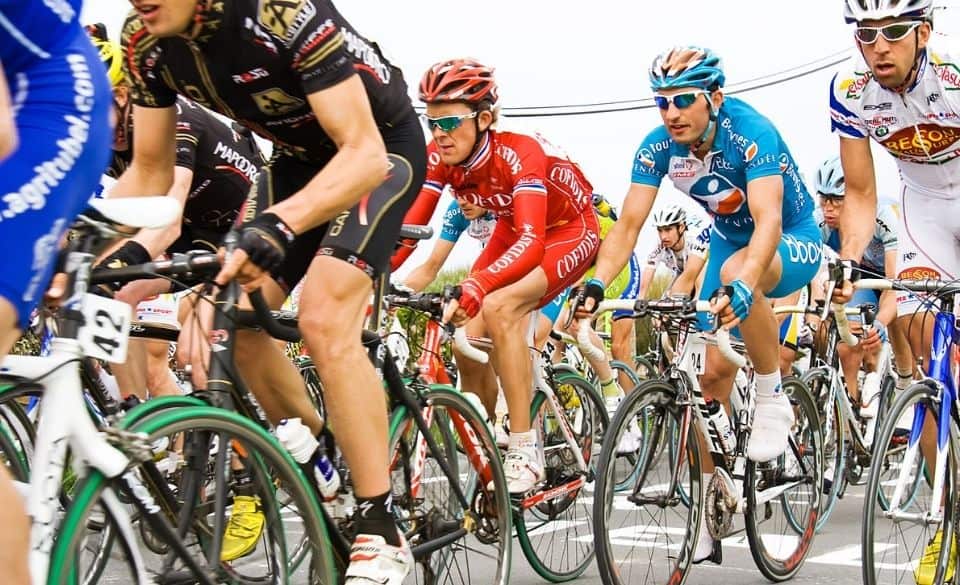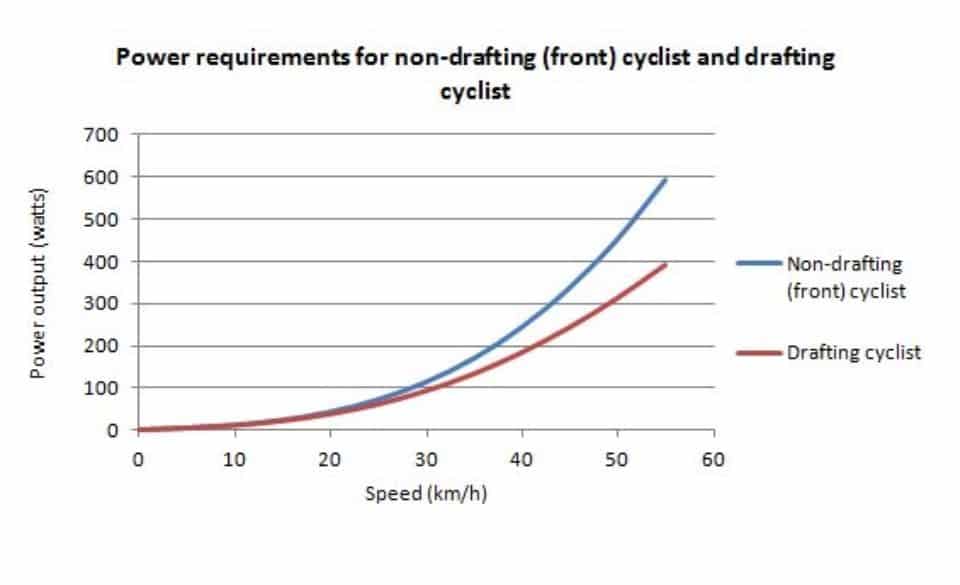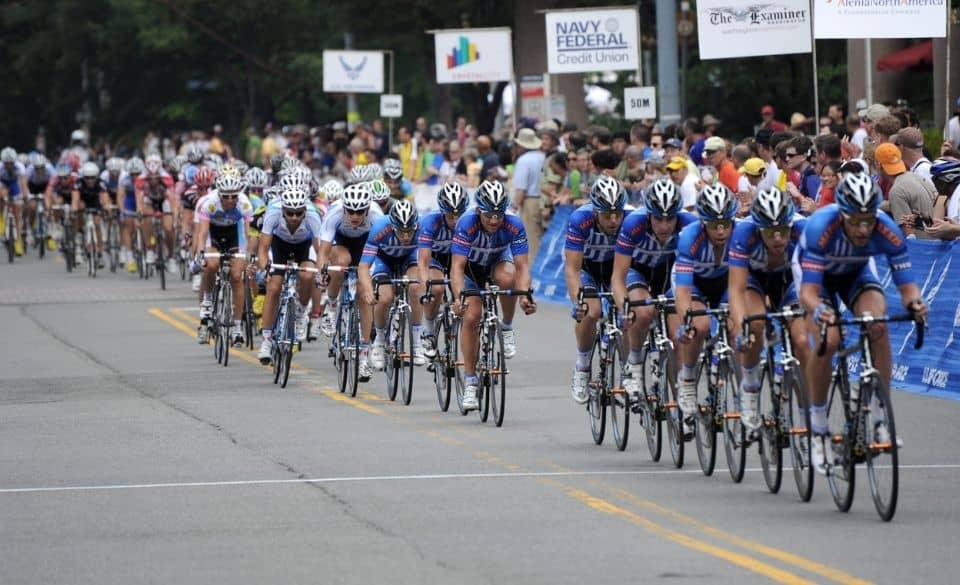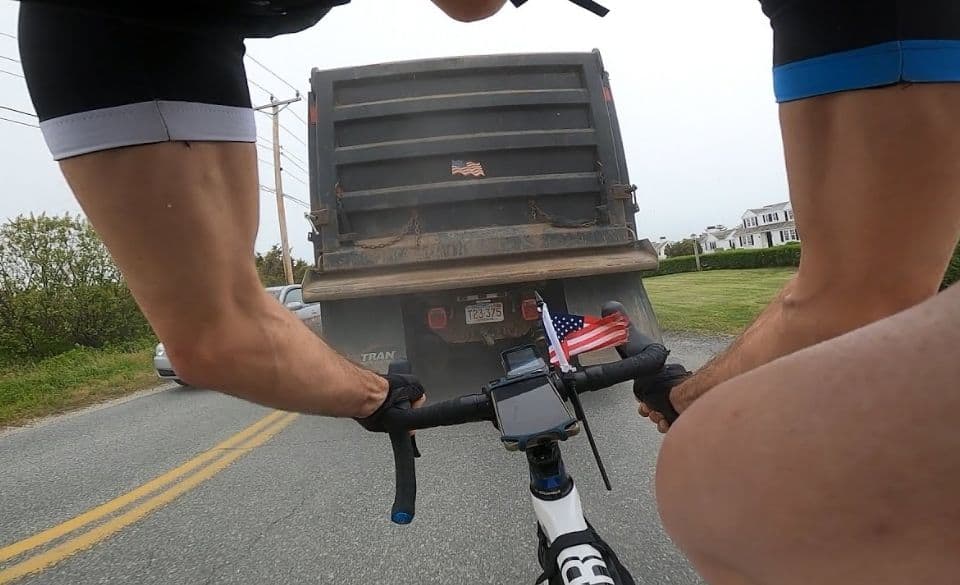
Cycling Drafting Advantage – A Complete Guide To Drafting Efficiency & Etiquette
Page Contents
As a cyclist, drafting is a common thing we do most days, and it is something we don’t think about too much. But there is a certain cycling drafting etiquette you should follow when riding in a group.
Not only that, cycling drafting efficiency is just as important when riding behind someone. So if you’re looking for a drafting advantage while your cycling, keep reading along.
Cycling Drafting Advantage – A Complete Guide
Cycling in a group or behind another rider is well known to provide a drafting advantage over riding solo. But how much energy or power do we save? And do we benefit from drafting when riding up a hill?
If you’re riding in a group there are forces that we need to overcome though. Gravity, rolling resistance, and wind are just some of the factors that affect your drafting advantage when cycling.
For example, when riding at 30 km/hr on a flat road, wind accounts for around 80% of the resistance the cyclist faces. If the speed increases to 50 km/hr, the resistance then increases to a whopping 94%.
But how much drafting advantage can we expect to see when cycling in a group or pairs?
To get the best cycling drafting advantage, you need to position yourself the optimal distance behind the rider in front. Not only that, but your position in the peloton can affect the amount of draft you receive.

Cycling Drafting Efficiency
Studies have shown that efficiency can be as much as 50% for riders that are drafting. The exact reduction is affected by several variables that we cannot always control. These variables can include; bike position of the rider in front, strength and direction of the wind, and the gap between wheels. But in general, you should expect to see a drag reduction of 27-50 percent.
A cycling drafting efficiency study by Swiss Side found that a gap of 10 cm or less behind the wheel in front provides the best draft. They noted at this distance the rider can expect to save around 90w when riding at 250w. But if you are too scared to ride that close, don’t worry the benefits of drafting continue until the separation mark of 5 meters.
While the previous study was only focusing on two riders, the peloton’s cycling drafting efficiency is much more in a larger group. A Study from Chester R. Klye found that the efficiency of drafting can be up to 44% while riding in a group. But this does also mean you need to place yourself in the correct part of the group to get the most benefit.
Depending on the group size, the best place for efficiency is in the middle of the bunch. This position helps protect you from the wind at all angles.
You may be thinking the back of the peloton is the best place to position yourself, this is simply not the case. Being at the back of the group often leads to gaps opening and allows more wind to hit you from the side.
It’s worth noting though, that these findings are calculated on the perfect alignment of riders. Spacing and overlap between the riders can change the efficiency by as much as 30%.
Cycling Drafting Etiquette – What You Should Know?
Even though drafting is a common thing in cycling, there is some cycling drafting etiquette you should first know. First and foremost, if you’re out on a solo ride, don’t draft of a stranger. Instead, start by rolling up alongside them and ask if you can tag along. Luckily, if they allow you to join, do your fair share of work, and don’t be that person that never goes to the front. Drafting is a team effort, and you should also help to keep the pace high.
If you are strong enough to ride with the group, you are strong enough to help, even if it’s just for a short period. Know your limit, as there is no point in joining a group that is way too fast. Because if you do reach the front, you won’t be strong enough to hold the speed. Thus affecting the group’s efficiency and causing a sudden increase and decrease in pace.
Even though drafting is easier than being on the front, make sure you don’t fixate or stare at the wheel in front of you. Pay close attention to the cyclist but focus more on the movement of the group, and surroundings. Then make sure you glance down regularly to check the distance between your front wheel and the back wheel in front of you.
Because drafting requires you to be close to the rider in front, you still need to remember to leave adequate room for changes of speed and sudden stops. Drafting too close to the rider in front will see you braking every few seconds and affecting the group’s efficiency. Instead, give the cyclist in front of you enough room to brake, it will also give you more time to react.
Follow the correct cycling drafting etiquette and there should be no problems turning up to your next group ride.
Cycling Drafting Etiquette 101
Be predictable – There is nothing more dangerous than an erratic cyclist. Make sure you are predictable in every movement you do. Make sure you ride smoothly and without any sudden movements. Whether it be standing up, making a turn, changing hand position, or pulling through.
No Half Wheeling – This happens all the time, even with seasoned riders. Not only is this annoying to the other rider, but it also causes erratic speeds.
Overlapping Wheels – Overlapping wheels in front of you is just asking for a crash. Unless the group has formed an echelon cause of the wind, make sure you stay behind the wheel in front of you. It will prevent any touching of wheels if the rider in front of you makes any sudden movements.
Communication – Communicate with riders around you and point out any road hazards you may experience. It will provide a safer experience for all the riders in the group.
Obey Traffic Rules – A rule that is often forgotten on group rides. Stop for all red lights and stay on the correct side of the road.
Releasing Fluid – No one likes to be hit with a snot rocket or spit. Instead, pull off to the side or go to the back of the group.
No Ear Buds – You need to be attentive when riding in a group. Unless you know the other riders, stay away from listening to music while riding in a group.

Getting Started With Road Bike Drafting Technique
If you spend most of your time riding solo, you may not have any experience with the correct road bike drafting technique.
The correct road bike drafting technique requires the cyclist to rotate through a line to the front of the group before pulling off and latching onto the back. The cyclist needs to be close to the rider in front and only allow a small gap to the rider opposite them. When you draft like this, far less energy is needed, and you become more efficient.
The best drafting technique requires the rider to keep within 10 cm of the rider in front when the wind is coming front on. This position saves the most power and uses the least energy. If the wind is coming from the side, you will need to change your position slightly to compensate.

Bike Drafting Behind Truck – What You Should Know?
It’s not uncommon for a cyclist to draft cars for fun, and you may come across someone on a bike drafting behind a truck at some point. Overall this isn’t good practice and shouldn’t be looked at as a fun experience.
During a professional bike race, you may see riders constantly drafting team cars. These are much smaller and allow the rider to see through the back windscreen and around the sides. Also, roads are often closed during a professional cycling race, providing a much safer environment than the open road.
Drafting behind a truck is often much more dangerous on the open road, as you cannot see what is coming in front. If the truck brakes hard, watching the lights will be no use as you won’t be able to stop fast enough.
Even though drafting behind a truck gives you the satisfaction of riding fast and better drafting, simply don’t do it. Drafting a truck is a dangerous practice for you and also the driver and other vehicles.



